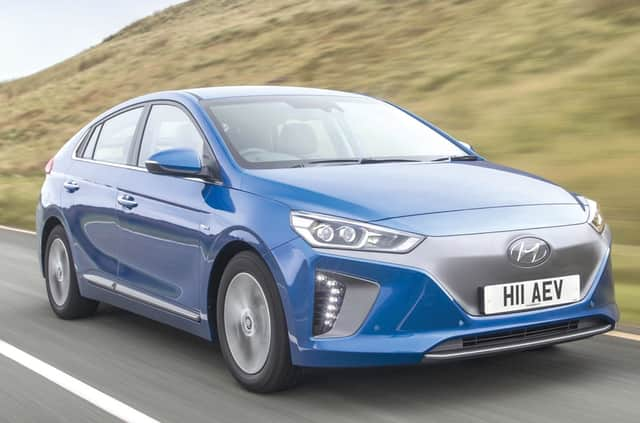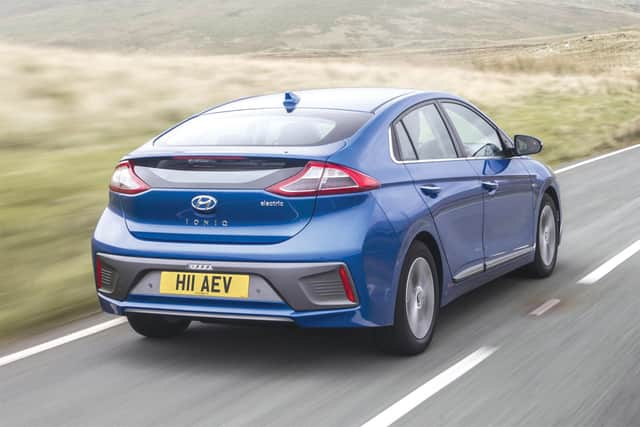MOTORS REVIEW: Hyundai Ioniq EV


That mid-sized crossover features a largercapacity 64kWh battery to deliver a zero-emission range some 80 miles greater than the e-Golf’s (conservative) claims.
The Korean brand is entering the second phase of its EV journey with the Kona, though.
Advertisement
Hide AdAdvertisement
Hide AdFor more than a year now, customers have been able to get behind the wheel of a full-EV version of the Ioniq, which claims a 174-mile range from a 32kW battery which drives a motor delivering the equivalent of 139bhp and 195lb ft of torque.
The stats are near-as-damn-it identical to those of the e-Golf.
A basic starting price of £26,295, including the Government’s £4,500 ULEV grant, is some £2,000 cheaper, however, and includes an array of standard kit.
There’s an eight-inch touchscreen infotainment system featuring a five-speaker Infinity sound system.
Advertisement
Hide AdAdvertisement
Hide AdThere’s also keyless entry, adaptive cruise control, autonomous emergency braking, parking sensors with a reversing camera and (I always find this odd in an EV or hybrid) full leather seats that are both heated and ventilated in the front.
The Ioniq EV feels like a genuine range-topper.
Whether you are initially drawn to it might console is the only thing that sets the driving process apart from the other cars in the lineup — that and the relative quiet, of course.
The Ioniq EV is not quite as refined as the Golf on the move, nor is the interior quality equal to Volkswagen’s lofty standards of soft touch materials and motion-sensitive infotainment.
Bronze-coloured highlights to the dash and steering wheel mark out the Ioniq — along with its smooth plastic front “grille” area — but look a little cheap, in truth.
Advertisement
Hide AdAdvertisement
Hide AdThat said, there’s plenty of rear seat space and a boot seven litres larger, at 350-litres, than the e-Golf’s.
The Ioniq offers Sport and Eco drive modes that adapt drivability to your expected journey type and it can move pretty swiftly in the former, delivering claims of 9.9-second (10.2 seconds in “Normal” mode) acceleration to 62mph and a 103mph top speed.


On a motorway cruise, the Ioniq EV is a comfortable and stress-free companion, and somewhat reassuring is the trip computer’s relative pessimism.
A full charge registered less than 130 miles during my test, but that figure declined more steadily than anticipated, even on a motorway run, to deliver an expected range I’d anticipate to be close to 140 miles.
Advertisement
Hide AdAdvertisement
Hide AdQuietly, as befitting electrified technology, Hyundai has been moving into the EV sector ahead of many rivals and the Ioniq made an impressive debut for the brand.
It’s a useable and well-specced car that performs as well as many EVs which rivals are only now delivering to the market.
I’m impressed — and preparing for the Kona to move the game on even further still.
depend on your appreciation, or not, of that high-backed Prius-esque aerodynamic styling, which communicates to the world that this is a car with eco-credentials at its core.
Advertisement
Hide AdAdvertisement
Hide AdThe Golf, of course, is able to fly below many-a pious EV lover’s radar.
Hyundai introduced hybrid, plug-in hybrid and EV versions of the Ioniq all at once in a bid to ease its customers into the ownership of an electrified vehicle.
A drive of the EV version suggests that no such easing was required.
A push-button gear selector on the centre